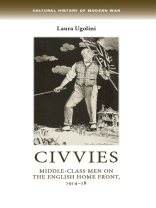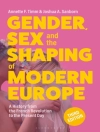The history of the First World War continues to attract enormous interest. However, most attention remains concentrated on combatants, creating a misleading picture of wartime Britain: one might be forgiven for assuming that by 1918, the country had become virtually denuded of civilian men and particularly of middle-class men who – or so it seems – volunteered en masse in the early months of war. In fact, the majority of middle-class (and other) men did not enlist, but we still know little about their wartime experiences. Civvies thus takes a different approach to the history of the war and focuses on those middle-class English men who did not join up, not because of moral objections to war, but for other (much more common) reasons, notably age, family responsibilities or physical unfitness. In particular, Civvies questions whether, if serviceman were the apex of manliness, were middle-class civilian men inevitably condemned to second-class, ‘unmanly’ status?
表中的内容
Introduction: Middle-class men and the First World War
1. The impact of war, c. 1914–15
2. The war on the home front, c. 1915–18
3. A united home front?
4. Civilians and military service
5. Home front volunteers
6. Working lives
7. Consumption and leisure
8. Families and relationships
Conclusion
Bibliography
Index
关于作者
Laura Ugolini is Reader in History at the University of Wolverhampton












